The Japanese automaker Mazda is well known for its innovative approach. Past achievements include the RX8 sports car featuring a rotary engine, and more recently, the company has focused on fuel-efficient petrol engines that, unlike many competitors, do not use turbocharging.
Overall, Mazda enjoys a solid reputation for reliability. Owners have reported that only about one in four of their vehicles experienced any problems over the past two years.
Moreover, Mazda covers a large portion of the repair costs: 83% of necessary fixes were completed at no charge.
Mazdas That Are Surprisingly Reliable
Mazda ranked 16th out of 31 car brands, earning a score of 91.1%. This places it around the middle of the pack in terms of dependability. However, this marks a slight decline compared to previous years: in 2023, it placed 13th out of 32 with a score of 92.8%.
Mazda 2 (2015-present)
Among Mazda’s models, the Mazda 2 small hatchback and the CX-5 family SUV — particularly the petrol variants — are noted for their strong reliability. On the other hand, the CX-60 has been associated with a higher number of problems.
The most reliable Mazda model is the Mazda 2, which has been in production from 2015 to the present. It boasts a reliability rating of 96.8%. The most common issues reported were related to the 12-volt battery (7%) and non-engine electrical components (7%).
In terms of repair costs, 50% of repairs cost nothing, while the other 50% fell within the £101–£200 range. Impressively, all affected cars were off the road for less than a day.
The Mazda 2 is a compact petrol-powered hatchback that competes with vehicles such as the Hyundai i20, Skoda Fabia, and VW Polo. In the used market, it also rivals the once best-selling Ford Fiesta.
The model features a fairly upscale interior, economical mild-hybrid engines, and generous standard equipment, even in the entry-level version. However, it does fall short in driving enjoyment compared to the Fiesta and lacks some of the refinement seen in other competitors.
Its standout feature is its excellent reliability history. Only 14% of Mazda 2 owners reported any issues, and all of the affected vehicles remained driveable, indicating that the problems were not severe.
All repairs were completed within a single day, and Mazda covered the entire cost of the work.
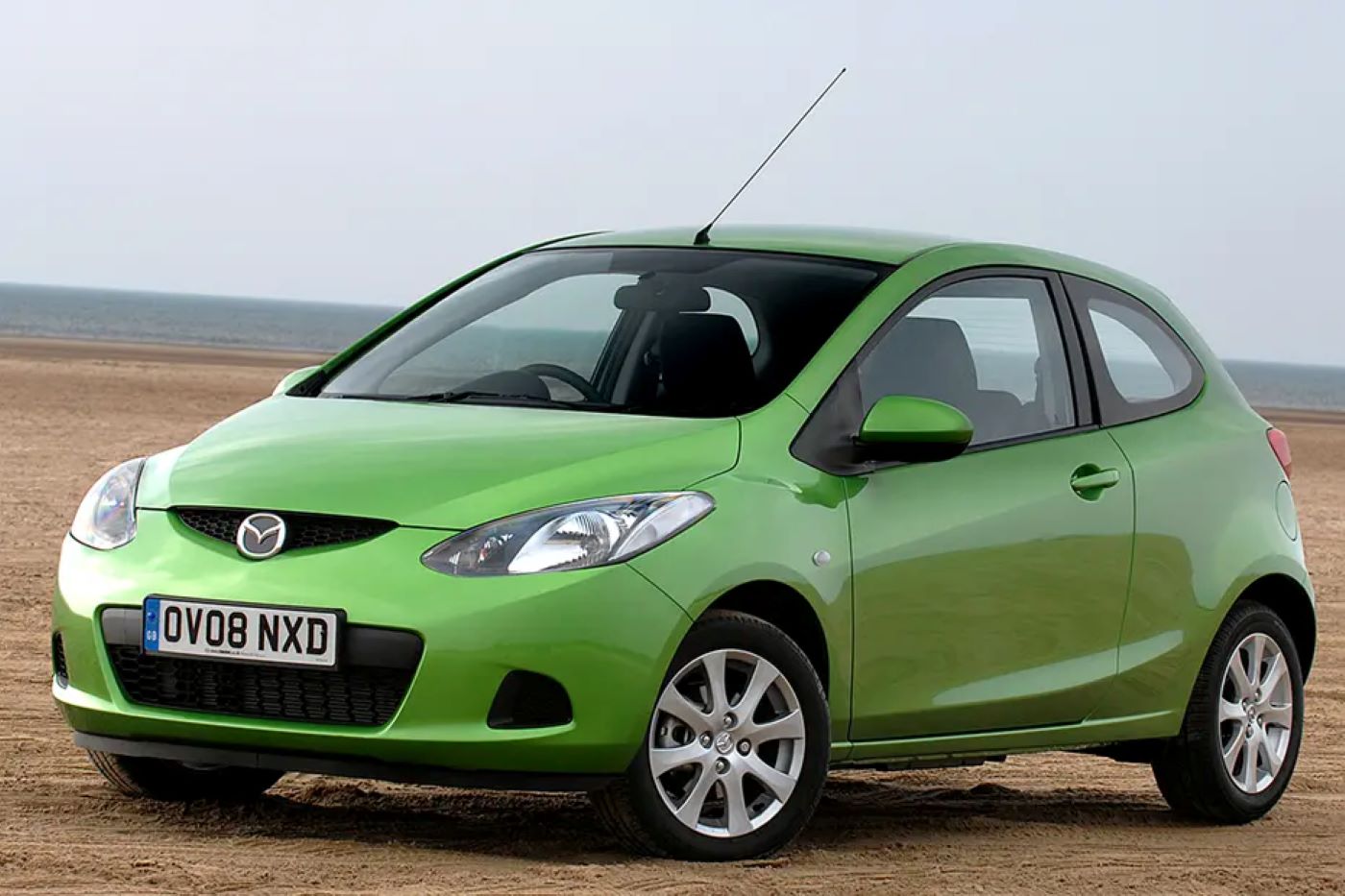
The new Mazda 2 has a distinctive charm that sets it apart from many competitors in its class. It offers an impressive balance of performance and efficiency, boasts a stylish design that outshines many rivals, and comes packed with advanced technology.
While the quality of the interior may leave something to be desired, the car’s sporty, firm ride and the potentially noisy engine could be drawbacks for some, but it remains a highly appealing option for anyone in the market for a small car.
Mazda has an exciting year ahead with three all-new models and several facelifts planned for 2015.
Among these, the release of the new Mazda 2 is especially significant as it enters the fiercely competitive supermini sector, traditionally dominated by models like the Ford Fiesta and VW Polo, alongside newer competitors such as the Hyundai i20.
Despite the fierce competition, the Mazda 2 has always stood out thanks to its stylish appeal and superior driving dynamics, qualities it continues to emphasize. The car retains the sharp, distinctive looks it’s known for but incorporates more class and dynamism.
With the latest iteration of Mazda’s Kodo design language, it features a bold, chrome-ringed grille, swept-back lights, striking side creases, and a coupe-like roofline.
Additionally, the new Mazda 2 is larger than its predecessor, measuring 14 cm longer and 2 cm taller, which translates to more interior space and a 280-litre boot that’s just shy of the Ford Fiesta’s capacity.
While the Mazda 2 isn’t the most spacious car in its class—models like the Hyundai i20 are more generous in this regard—it offers a reasonable amount of space for most buyers.
However, it’s not the most practical in terms of usability, as there’s an awkward step when folding down the rear seats. Nevertheless, for most people, the boot and rear passenger space should suffice.
Beyond its design and space, the Mazda 2’s driving experience is what truly makes it stand out. Its performance approaches that of a hot hatch, even in the more popular 1.5-litre 89bhp mid-spec SE-L version that we tested.
The car we drove, however, wasn’t exactly a standard SE-L, as it featured larger 16-inch alloys and LED lights typically reserved for the Sport models. This likely contributed to the overly firm ride and increased tyre noise, which could be described as sporty.
The 1.5-litre engine is a true highlight. It’s a lively and responsive unit, offering a satisfying amount of power that allows the Mazda 2 to accelerate from 0 to 62 mph in just 9.4 seconds.
Thanks to Mazda’s SkyActiv technology, this impressive performance doesn’t come at the cost of fuel efficiency, with the car achieving a claimed average of 62.8 mpg and a tax-friendly 105 g/km of CO2 emissions.
Also Read: 13 Engines That Made Japanese Cars Unstoppable and Changed Performance Culture Forever
Mazda CX-5 petrol (2017–present)
The Mazda CX-5 petrol (2017–present) has proven to be a reliable and well-rounded family SUV, with a reliability rating of 96.1%. The most frequently reported issues relate to the sat-nav and infotainment system (10%), bodywork (7%), and non-engine electrical components (3%).
In terms of repair costs, 87% of repairs were completed at no cost, while 13% fell in the £50–£100 range.
When it comes to repair time, 67% of affected vehicles were back on the road within a day or less, though 13% took more than a week.
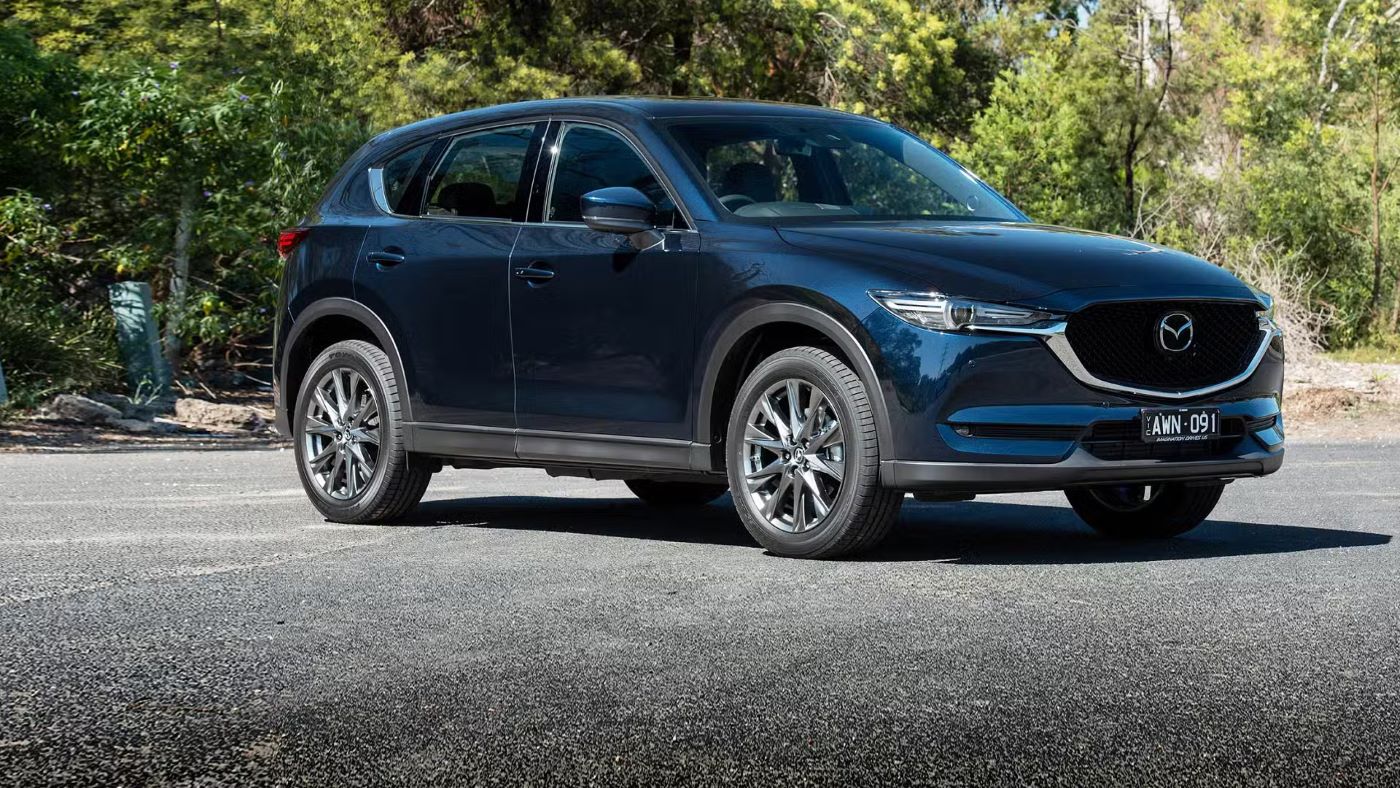
The CX-5 offers a good driving experience and, while it may lack a premium badge, its interior feels more upscale than many rivals in the budget-friendly SUV segment.
It’s also known for being both practical and competitively priced. However, for those considering a CX-5, the petrol version is likely the better choice over diesel.
Only 17% of petrol models surveyed experienced faults, compared to 48% of diesels. Sat-nav and infotainment issues were the most common among petrol versions, followed by minor bodywork concerns.
Fortunately, most repairs were covered at no cost, and the majority of vehicles were repaired in a day or less.
Mazda CX-30 (2020–present)
The Mazda CX-30 (2020–present) is another solid offering, earning a reliability rating of 93.4%. The most commonly reported problems include the 12-volt battery (13%), air conditioning (4%), engine electrics (2%), non-engine electrics (2%), and the sat-nav/infotainment system (2%).
Regarding repair costs, 91% of fixes were completed for free, while 5% required an expense between £1000 and £1500. In terms of downtime, 46% of repairs were completed in one day or less, but 40% of cases took over a week to resolve.
Built on the same platform as the Mazda 3 hatchback, the CX-30 is a stylish compact SUV featuring a premium interior, efficient engines, and high levels of standard equipment.
Although it doesn’t ride quite as comfortably as the Volkswagen T-Roc or offer the engaging drive of the Ford Puma, it stands out for its dependability.
Only 17% of owners reported any problems, with the 12-volt battery being the most common issue. Encouragingly, more than two-thirds of affected vehicles remained drivable, but the main downside was that nearly half of them took more than a week to repair.
The Mazda CX-30 small SUV is designed to meet the needs of a family for every type of journey, whether it’s a long-distance road trip or a quick jaunt around town.
Built on the same platform as the Mazda 3, the CX-30 maintains compact dimensions while offering performance through two petrol engines with mild-hybrid technology. This combination promises both efficiency and power.
However, the question remains: how does it compare to other small SUVs, such as the Seat Arona, Skoda Kamiq, or VW T-Roc, in terms of fun-to-drive appeal, practicality, and comfort?
The CX-30 aims to answer this with its stylish and high-quality interior, generous equipment levels, and efficient engine options.
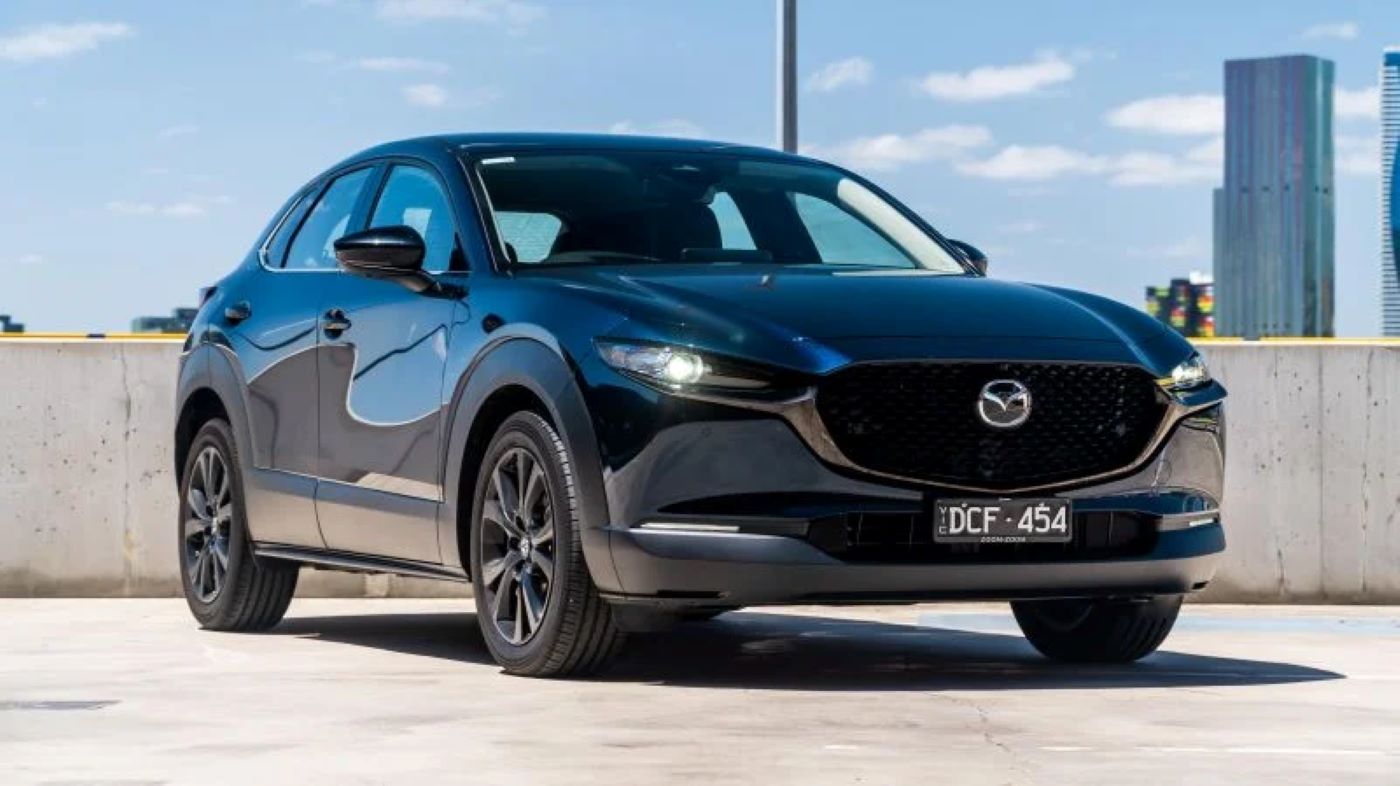
The Mazda CX-30 has several advantages, including fantastic interior quality, economical engines, and a well-equipped cabin.
However, there are some drawbacks as well. The rear seats don’t offer much flexibility, and the boot lacks any particularly clever features. Additionally, some competitors offer a more refined ride and better handling.
If you’re considering purchasing a new CX-30, the best value comes from choosing the entry-level e-Skyactiv G engine paired with the Centre-Line trim. The starting price for the CX-30 is £25,995, and leasing deals begin from £244 per month.
When it comes to performance, the CX-30 offers a comfortable and controlled ride with minimal wind and road noise. The manual gearbox is a standout feature, offering a smooth and precise shifting experience.
However, some rivals, like the Ford Puma, provide a more engaging driving experience, and other competitors have a more refined ride. The 2025 Mazda CX-30 introduces a new 138bhp 2.5-litre petrol engine, badged e-Skyactiv G, which significantly improves performance over the previous model.
This engine gives the CX-30 a turbocharged feel, comparable to rivals like the 123bhp 1.0-litre Ford Puma. The second engine option is a 183bhp 2.0-litre petrol, the e-Skyactiv X, which offers more power but only performs optimally at higher revs.
Buyers can choose between a manual or automatic gearbox, with the manual being the better choice for fuel economy. The automatic transmission can be less responsive, occasionally hesitant to downshift when a quick burst of acceleration is needed.
Also Read: 5 Fuel-Efficient Crossovers and 5 That Burn Through Cash
Mazda 6 (2013–2022)
The Mazda 6 (2013–2022) stands out as a well-rounded vehicle, offering ample space and a high level of standard equipment, making it a desirable option in the used executive car market. Its diesel engine is known for being quiet and smooth, and it delivers impressive fuel economy.
One of the car’s strengths is its infotainment system, which features large, bright icons and quick responsiveness. However, the reliability of the Mazda 6 isn’t flawless. With a fault rate of 35%, it is on the higher side.

The most commonly reported issues involved minor bodywork problems, followed by air-conditioning, brakes, engine electrics, and non-engine electrical faults, each accounting for 6%.
On the positive side, two-thirds of the reported issues were resolved within a day, and 83% of repairs were carried out free of charge.
Still, some owners had to pay up to £750 to fix their cars. Overall, while not without its flaws, the Mazda 6 remains a practical and appealing choice for buyers looking for a reliable and well-equipped used saloon.
Mazda MX-5 (2017–present)
The Mazda MX-5 (2017–present) continues its legacy as a beloved motoring icon, celebrated for delivering driving excitement at an accessible price for more than 30 years.
Though it’s more affordable than premium sports cars, it doesn’t skimp on performance, thanks to its free-revving engines, smooth gearbox, and agile handling. In terms of reliability, the MX-5 lands in the middle of the range.
About 21% of owners reported issues, most commonly with non-engine electrics (9%), followed by faults with the 12-volt battery (6%), engine electrics (3%), and suspension (3%). While repairs were generally completed quickly—none taking longer than a week—only 29% of them were resolved at no cost.
Some repairs ended up costing owners between £501 and £750. Despite these concerns, the MX-5 remains a highly regarded option for those seeking an affordable and enjoyable sports car experience.
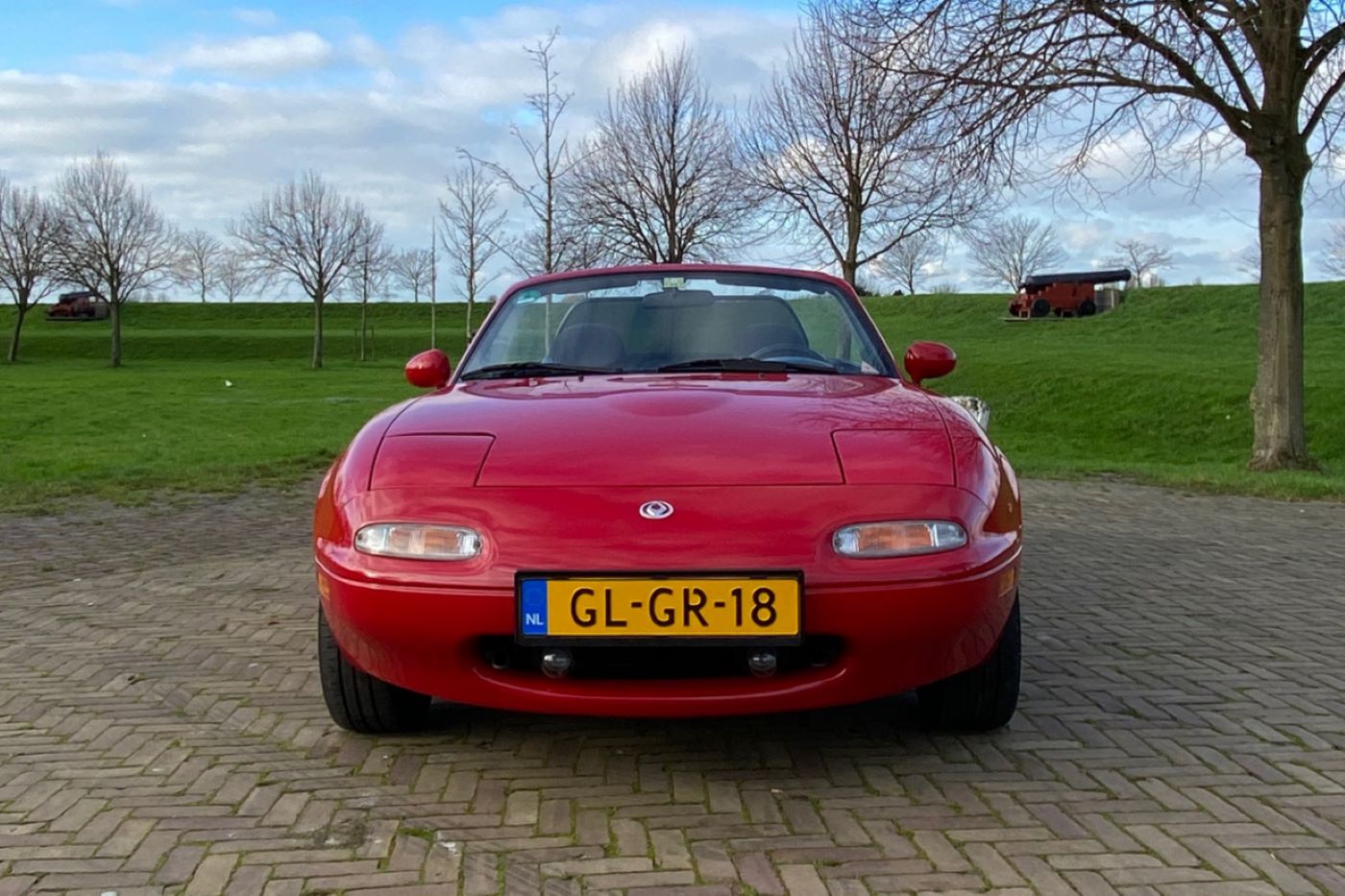
We’ve been highly impressed by the new Mazda MX-5. It offers a straightforward, no-frills sports car experience that leaves little room for criticism. The first challenge facing the RF model, much like the Fiat 124 Spider, is simply not to ruin this successful formula.
The RF doesn’t ruin the experience, but it’s definitely an acquired taste. While it’s cool in its own right, it doesn’t feel like a crucial addition to the MX-5 lineup. I don’t dislike it, but I do find myself questioning its necessity.
To clarify: I’m not fond of Porsche’s new 911 Targa. Its overly complex, robotic roof completely undermines the lightweight, simple charm of the original removable roof panel. It’s heavy and expensive, and in my opinion, it’s a targa in name only.
So why mention this? Because it’s only fair not to completely overlook the RF’s somewhat Porsche-like take on the power-targa setup, though it doesn’t quite evoke the same frustration.
The RF offers a unique driving experience that comes with the hardtop. Currently, it’s the only way to get a hardtop ND MX-5, and a true coupe would certainly be a welcome addition.
The hardtop changes the car’s handling, making it feel more stable around corners with less body roll, yet it doesn’t make the car any more uncomfortable than the convertible.
It’s also quieter. While it might be absurd to complain about wind noise in a Miata, I’d choose the RF over the ragtop for a long road trip without hesitation.
The interior feels more peaceful, but with the top down, the open-air experience is only seconds away. As for the top itself, it’s an impressive piece of engineering.
The manual convertible top is elegantly simple and easy to use, but the RF’s mechanism is almost hypnotic—and it can be operated at a regular stoplight.
If I had to choose between the two, I’d probably lean toward the ragtop, assuming I can’t opt for a 124 Spider Abarth with the Monza exhaust. The MX-5 is already close to perfect, and the beautifully engineered manual cloth top adds to its charm.
Though, generally, I prefer hardtops, which is a point in favor of the RF. Still, I’m not sure I could get used to having those buttresses in my peripheral vision all the time.
Mazdas With The Worst Reliability
Mazda, a smaller and more unconventional competitor among the major Japanese automakers, has come a long way from its origins as a cork manufacturer to becoming a globally recognized car brand.
Nonetheless, not every model in Mazda’s history has lived up to this reputation. Some specific model years have marked noticeable deviations from the brand’s typically consistent quality, making them less desirable choices for those shopping in the used car market.
1998 Mazda 626
Mazda introduced a new generation of the 626 for the 1998 model year, featuring refreshed styling and improved interior space.
Although its current low resale value might make it appealing to some used car buyers, the 1998 Mazda 626 is widely regarded as one of Mazda’s most problematic models and is generally best avoided.
According to the National Highway Traffic Safety Administration (NHTSA), the vehicle has accumulated 438 complaints and has been subject to six recalls. All but one of those recalls took place over 15 years ago, with the most recent — concerning a defective ignition switch — issued in 2015.
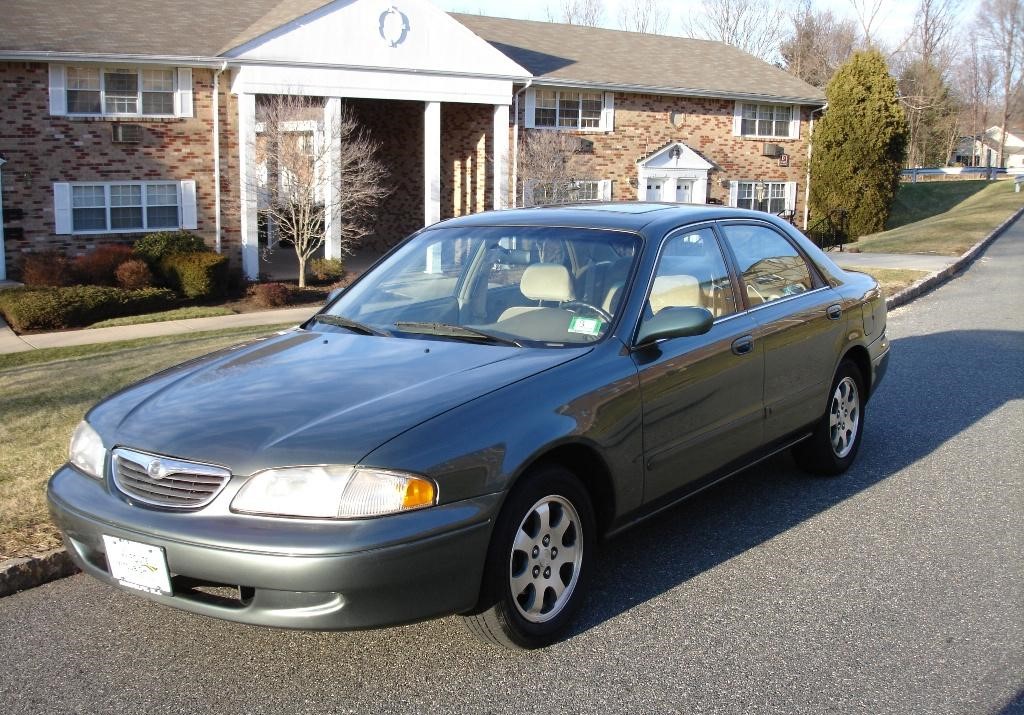
Despite these recalls, most owner complaints revolve around unrelated issues, particularly with the powertrain. The car’s transmission is the most commonly cited area of concern, with numerous reports of premature failure.
Owners have described both partial and complete transmission breakdowns, often occurring without any warning signs. Additionally, a small number of drivers have experienced their vehicle stalling unexpectedly while on the road, after which the engine would not restart.
Some of these stalling incidents may be related to a 2000 recall involving a timing belt tensioner, either due to the recall not being completed or the replacement part failing to correct the problem.
2001 Mazda Tribute
The 2001 Mazda Tribute also suffers from a poor reputation. Developed during Mazda’s partnership with Ford, the Tribute was closely related to the Ford Escape and was manufactured alongside it at Ford’s Kansas City plant.
Unfortunately, the 2001 Escape had notable reliability issues, and the Tribute, sharing many of its components and the same assembly line, experienced similar problems. To date, the NHTSA has recorded 580 complaints about the 2001 Tribute, along with 15 recalls.
Several of these recalls overlap with those of the Escape, including defects in the brake master cylinder and a faulty speed control cable connector. The most frequent complaints concern the engine and engine cooling systems.
Other reported issues include malfunctions in the fuel system, problems with door locks and handles, and a variety of brake-related concerns. Excessive corrosion is also a commonly mentioned issue among owners, further adding to the list of reasons to avoid this model.
Mazda’s new Tribute could be exactly what you’re looking for. This compact crossover vehicle, designed with the budget-conscious SUV buyer in mind, offers exceptional levels of design, functionality, and driving dynamics typically found in sport/utility vehicles that cost thousands more.
Mazda handled the basic engineering for the Tribute platform, a front- or all-wheel-drive setup that will also be shared with Ford’s new Escape, another SUV designed to drive like a car.
Along with Mazda’s engineering expertise, Ford provided its manufacturing capabilities and contributed to the collaboration.
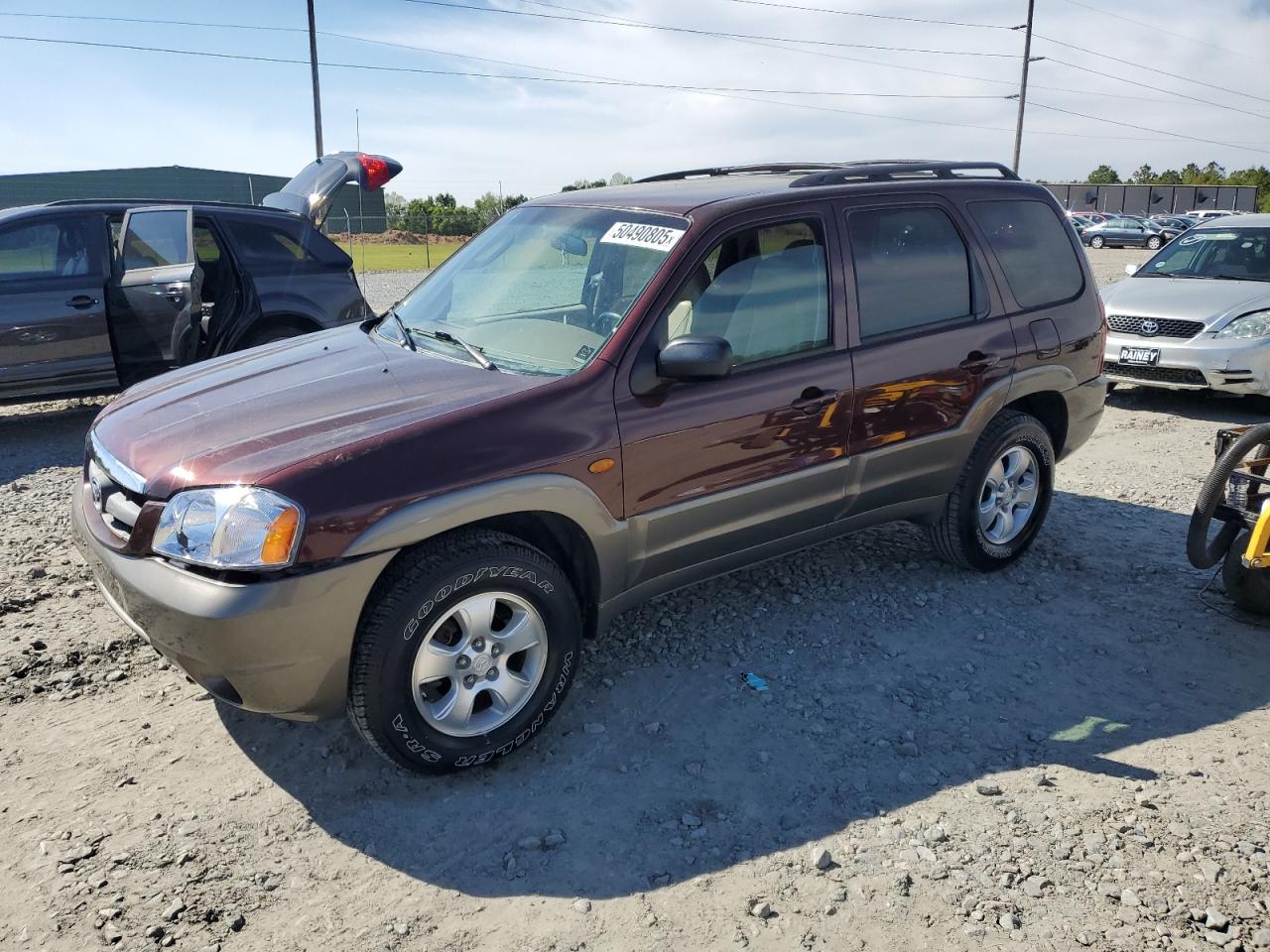
The base Tribute DX features a 2.0-liter, 130-horsepower DOHC four-cylinder engine, while the DX-V6, LS, and top-tier autoshifted ES models we tested come with the optional 3.0-liter, 200-horsepower DOHC Duratec V-6 engine.
This engine alone gives the Tribute a significant edge over its projected competitors, including the Honda CR-V, Toyota RAV4 (which doesn’t offer a V-6), and the Nissan Xterra (with a 170-horsepower V-6).
We’ll go out on a limb and suggest that the Tribute might even compare favorably to the larger-displacement six-cylinder versions of the Chevy Blazer, Ford Explorer, and Jeep Cherokee.
On the road, the Tribute impressed with its overall performance. It was remarkably stable, quiet, and capable, showing little of the excessive body roll commonly found in luxury SUVs, while also avoiding the harsh, jarring ride typical of some off-road-focused vehicles.
This competence carried over when we took it off-road, where the suspension tuning proved to be an excellent match for the Tribute’s optional on-demand all-wheel-drive system.
Unlike conventional viscous link systems, the Tribute features a “Rotary Blade Coupling” that uses a fan blade array to pressurize a silicone-like liquid, which in turn engages a mechanical clutch pack to send torque to the rear wheels.
Under normal traction conditions, the Tribute functions as a front-wheel drive vehicle, but when the front wheels slip, the system can briefly achieve a 50/50 torque split.
For especially slippery situations, there is a button-activated lockup feature to ensure that the vehicle is in all-wheel drive at all times.
1995 Mazda Protege
The 1995 Mazda Protege was neither the most distinctive nor the most dependable model in Mazda’s lineup. According to the National Highway Traffic Safety Administration (NHTSA), there have been 206 complaints and five recalls associated with this vehicle.
One of the recalls addressed faulty airbags, yet based on numerous owner complaints, it appears not all affected cars were properly repaired.
Airbag issues are the most frequently cited problem among owners, followed closely by faults related to the vehicle’s exterior lighting. These lighting problems were also addressed through recalls, covering both the side lights and the headlights separately.

A notable concern among many owners is that their vehicles experienced problems that were part of official recalls, yet their cars’ VINs were excluded from the recall campaigns.
As a result, they were not eligible to receive free replacement parts. Given its age and relative obscurity today, the 1995 Protege is a rare find on the used car market. However, anyone who encounters one being sold at an unusually low price should proceed with caution.
2007 Mazda CX-7
The 2007 Mazda CX-7 stood out by blending SUV practicality with the handling characteristics of a smaller, sportier vehicle. It played a key role in shaping Mazda’s future crossover offerings, culminating in models like the 2024 CX-90.
The CX-7 debuted with the 2007 model year, and, as is often the case with brand-new models, early production versions experienced some notable issues.
To date, the NHTSA has logged over 500 complaints about the vehicle and recorded five official recalls. Three of these recalls involve defective Takata airbags—a widespread issue among vehicles from that period.
Another recall addressed a potentially faulty roof rack bolt, and a fifth recall from 2016 was issued due to excessive corrosion in certain suspension parts.
While airbag concerns account for more than 100 owner complaints, engine problems emerged as the most frequently reported issues.
Owners described repeated air conditioning compressor failures, which in some cases led to fires, along with ongoing trouble with the vehicle’s variable valve timing system.
These issues were most prevalent in the 2007 model, with later versions seeing a decline in complaints—less than 200 for the 2008 CX-7 and only 63 for the 2009 model so far.
In response to the U.S. car-buying public’s desire for lighter, more agile, carlike “crossovers” — a welcome shift away from the bulky, fuel-hungry SUVs — Mazda introduced the five-passenger CX-7 in 2007.
This model followed the demise of the Mazda 6 wagon, which was similarly spacious and carlike, but was likely phased out in 2008 due to its association with the now-unfashionable term “wagon.”
Built upon Mazda’s existing car architecture, the CX-7 stood out with its unique styling and very un-SUV-like road manners. We added a CX-7 to our long-term fleet to see if it could combine the power of a V-6 with the fuel efficiency of a four-cylinder.

The CX-7 was powered by a 244-hp turbocharged four-cylinder engine, which was also used in the Mazdaspeed 3 and 6. The goal was to determine whether this mid-size SUV could deliver the performance of a larger engine while maintaining better fuel economy.
The CX-7 starts at $24,310, with standard features such as stability control, six airbags, and 18-inch wheels.
However, we opted to enhance the vehicle with additional options, pushing the final price to $32,195. The mid-level Touring model added a $1,750 premium and featured a leather steering wheel, heated leather front seats, and a power driver’s seat.
We also chose to add all-wheel drive for $1,700, the $4,005 Technology package (which includes a sunroof, six-CD changer, Bose nine-speaker stereo, navigation system, rearview camera, and keyless starting), and Sirius satellite radio ($430), which included a six-month subscription.
From the start, we were impressed by the CX-7’s friendly and responsive driving dynamics. Its excellent straight-line stability stood out, and we praised its “perfectly weighted and responsive steering” and “playful chassis.”
The Mazda exhibited an almost rear-wheel-drive-like feel, giving it a nimbleness that most other vehicles in its class lacked. One driver even compared it to “an SUV doing a rally-car impersonation.”
While the performance wasn’t solely about numbers, the Mazda did manage a somewhat ordinary 0.80 g on the skidpad, limited by the stability control system (which could only be switched off below 20 mph).
The anti-lock brakes, however, were among the smoothest we’ve experienced, offering stopping distances comparable to sports cars. The CX-7 could go from 70 mph to a complete stop in just 167 feet.
A significant contributor to the CX-7’s agility is its relatively light curb weight of 3,916 pounds. This is 612 pounds lighter than its slightly larger corporate cousin, the Ford Edge, which helps explain why the Mazda feels more agile on the road.
The CX-7 is also lighter than two perennial bestsellers in this category, the Honda Pilot and the Toyota Highlander, although those vehicles do offer a third-row seat.
However, the trade-off was an increase in road and wind noise, which staffers noted was higher than anticipated. There were also some downsides, particularly with the six-speed automatic transmission.
Many of us wondered why Mazda didn’t offer the six-speed manual transmission available elsewhere. The automatic transmission frequently upshifted earlier than expected, likely to improve fuel economy, and was reluctant to downshift when needed.
Additionally, for a vehicle costing around $32,000, it was surprising that the CX-7 didn’t display outside temperature or fuel economy readings.
Our biggest frustration, however, came from the turbocharged engine. We found it to be “thrashy,” “coarse,” and “gutless,” with its peak power dropping off sharply (and noticeably) well before the 6,700 rpm redline.
We achieved the best acceleration times — 0-to-60 mph in 7.6 seconds, and a quarter-mile in 15.8 seconds at 87 mph — when manually shifting at around 5,600 rpm.
When left in automatic mode, the acceleration was uneven, as the power fell off too early before the transmission would shift. As a result, the CX-7 felt less responsive, with a half-second delay in reaching 60 mph.
2010 Mazda3
As of now, the 2010 Mazda3 holds the title of the most complained-about Mazda model, with 672 complaints filed with the National Highway Traffic Safety Administration (NHTSA).
The vehicle has been the subject of three recalls. One of these addressed a fire risk caused by improperly installed wiring, another concerned the excessive corrosion of the rear liftgate struts, and the third involved a faulty seat lifter mechanism.
In addition to these official recalls, owners have voiced a wide range of other concerns, with the most frequent complaint focusing on the car’s dashboard. Hundreds of drivers have reported that the dashboard becomes sticky and begins to melt under hot weather conditions.
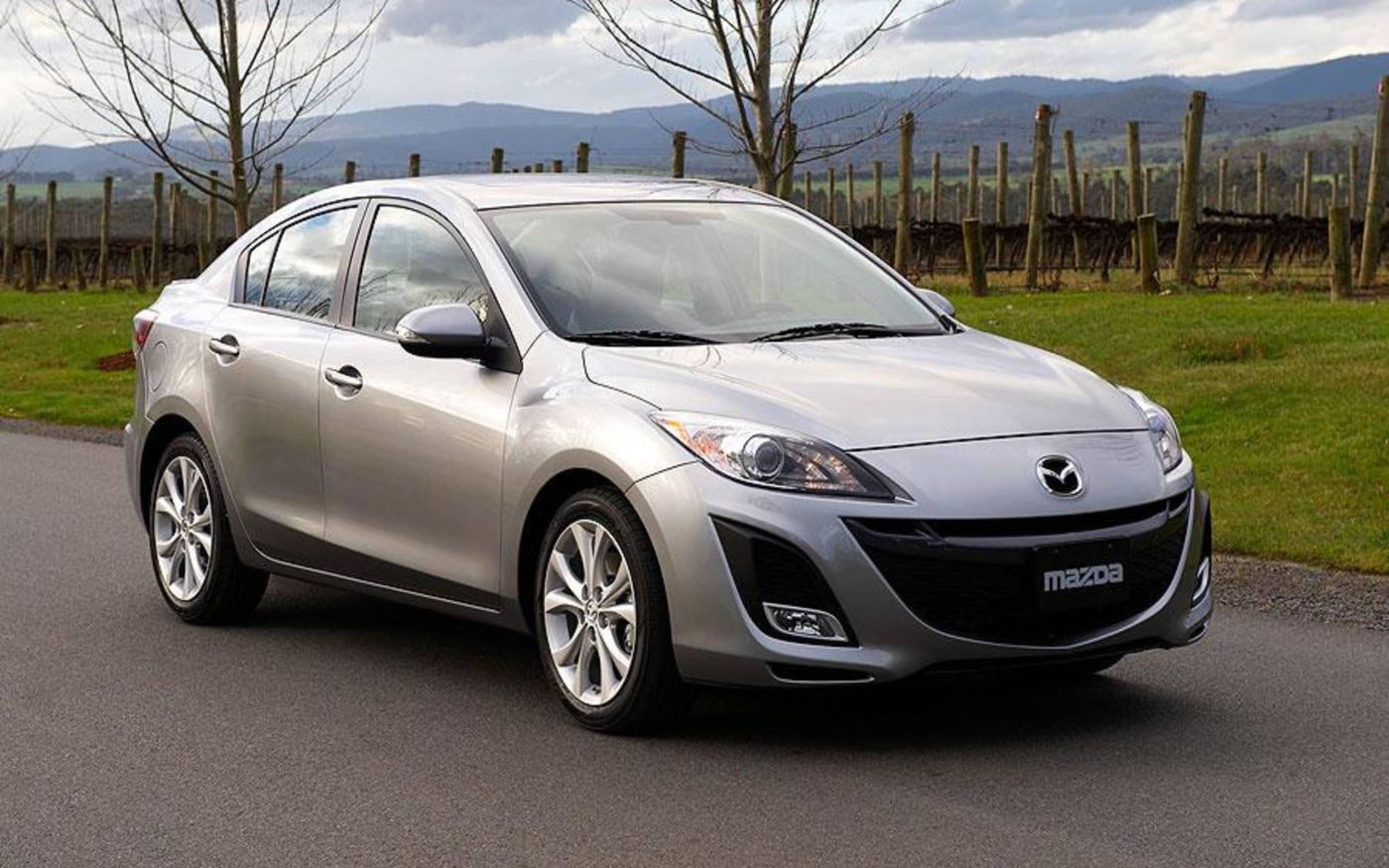
In many instances, this deterioration causes the dashboard to become reflective, which can impair the driver’s visibility.
Despite the volume of complaints, Mazda has not issued a recall for this issue. According to reports, many owners who took their cars to dealerships were informed that there was no available solution to address the problem.
Adding to the concerns, the 2010 Mazda3 is currently under an open investigation by the NHTSA to determine whether the car’s Takata-supplied airbags warrant a recall. However, as of this writing, no final decision has been made regarding that investigation.

